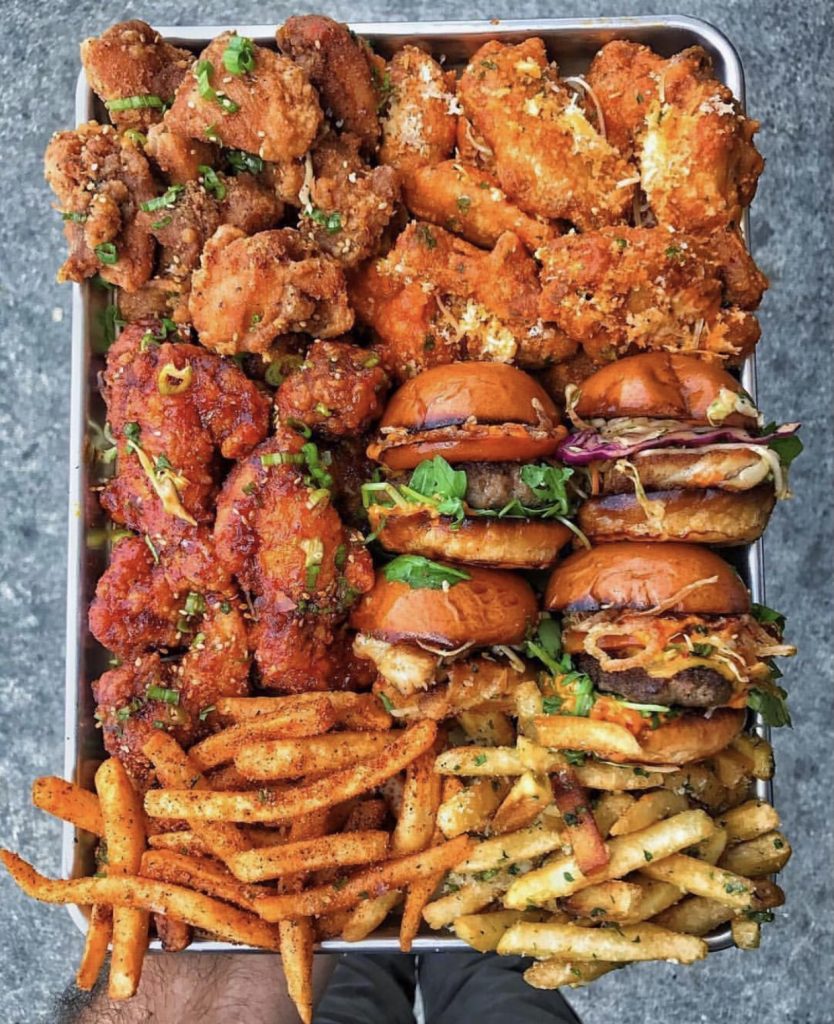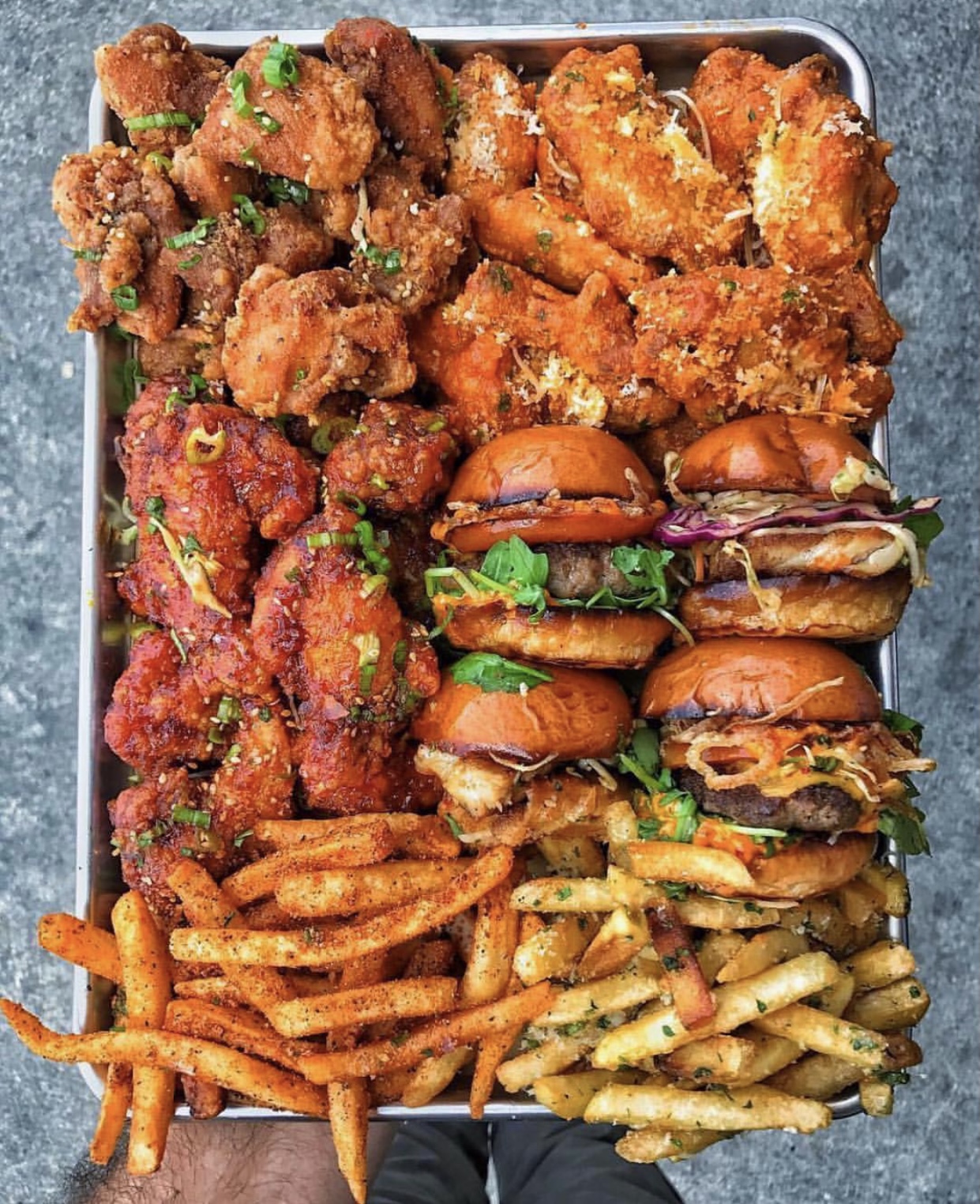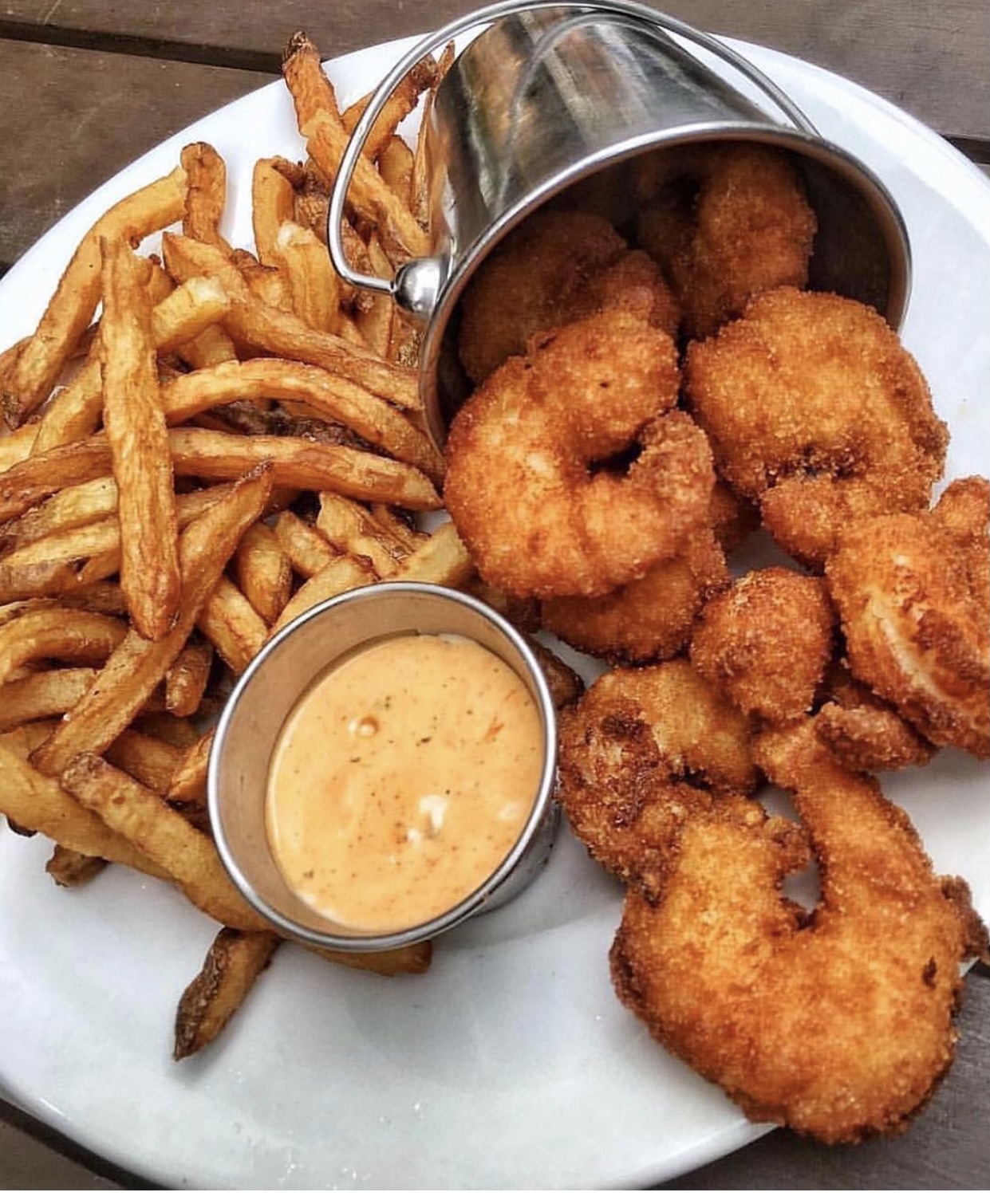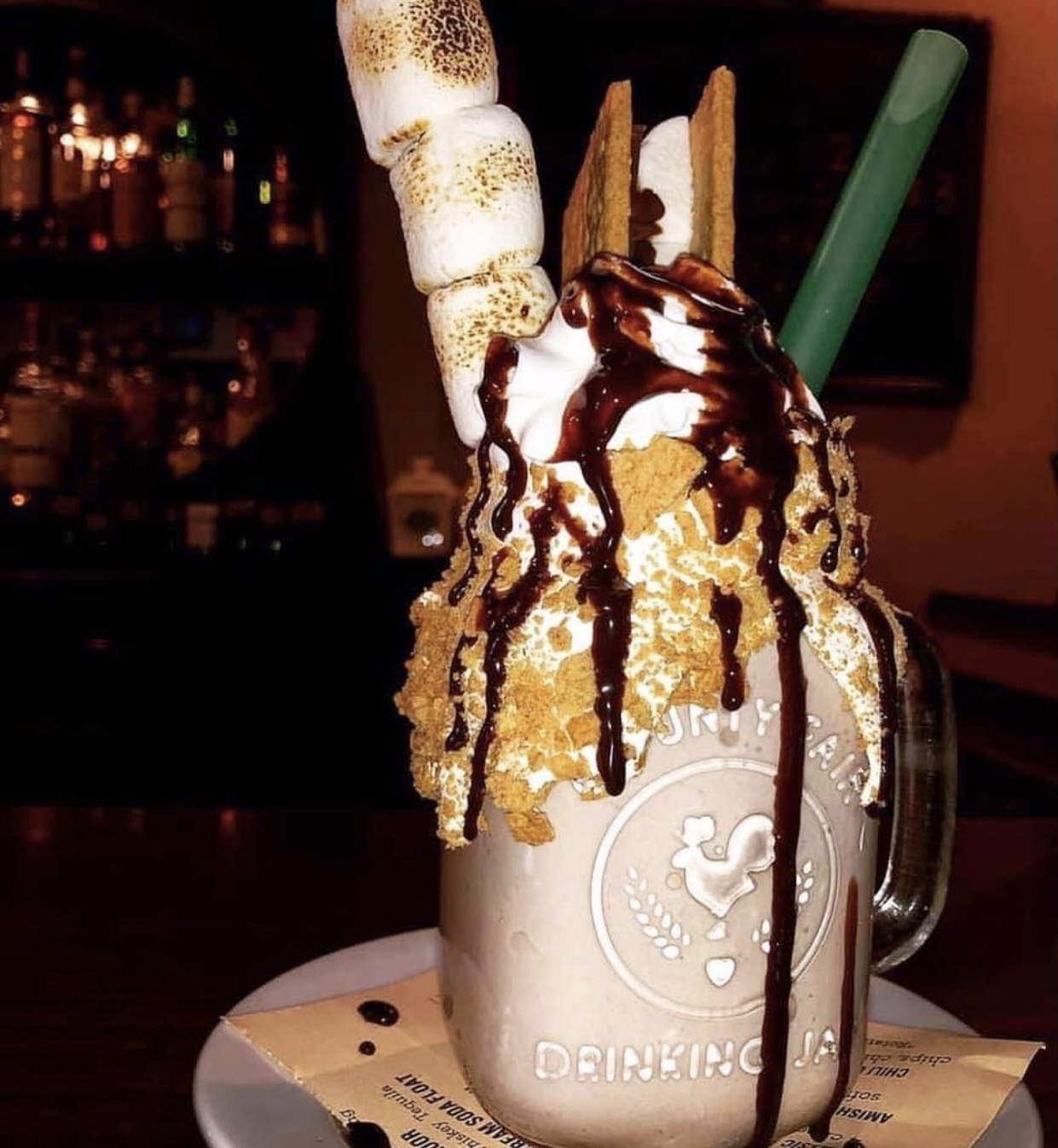
Beer-battered hot wings. Stuffed-crust pizza. Double-digit scoop sundaes. This is the stuff of cheat meal fantasies. But more often than not, it’s also the stuff of weight gain nightmares. The problem most guys run into when they’re straying from their diets is they don’t know how to properly splurge. Eating like garbage for damn near 24 hours once a week doesn’t equate to renewed resolve in your diet and exercise regimen any more than it stimulates muscle growth and fat loss. There are scientific and personalized components to a cheat meal you’ve probably been overlooking—until now.
A cheat meal is high in calories and all macronutrients—protein, carbs, and fat—and is not something that would normally be part of a proper diet plan,” says BuiltLean contributor and nutritional scientist Eva Lana, MSc. It’s not to be confused with a cheat day, which is an eight- to 12-hour window in which you go outside of your grilled-chicken-and-roasted-veggie diet, and straight out binge. In fact, cheat days aren’t really recommended for the average guy who’s in the gym four or so days a week. A cheat day, she says, is recommended for those who are serious, competitive athletes and body builders. For the average guy, Lana suggests a weekly cheat meal.
When it comes to cheating (on meals, that is), there are two hormones you need to be concerned with: leptin and ghrelin. Leptin is the “hunger hormone.” It’s mainly produced by fat tissue, and it regulates your appetite and energy stores. Grehlin is a hormone mainly produced by the stomach. It’s an appetite stimulant that signals the release of growth hormone.
“Weekly cheat meals that are higher in calories and carbohydrates can help raise leptin levels and lower ghrelin,” Lana says. When your hormones return to normal, they can help reverse or even prevent any negative effects on metabolism, hunger drive, and energy expenditure. What’s more, she adds, the increased calories may also help to increase thyroid function, further boosting metabolism; so a scheduled cheat meal may actually help optimize your body’s hormones to avoid weight loss plateaus and prevent chronic metabolism depression.”
And hey, if nothing else, it’s a welcome reprieve from your typical diet that can help you stay on track the rest of the week. (Think: Looking forward to pizza or wings on Friday night can help you make a healthy choice for lunch on Wednesday.)
Read on for her tips for using cheat meals to lose weight and gain muscle.
Plan and Schedule
Pick a day of the week that will be your designated “cheat” day—and stick to it. If you don’t, and just abide by what you’re feeling or craving, you’re way more susceptible to caving to cravings every other day. Also, you need to remember that cheat meals are meal replacements, Lana says. They need to fit into your current eating regimen, and aren’t meant to be a day-long gorge fest where you eat twice as much and twice as often.
Splurge on Favorite Foods
There are a few reasons you want to include your favorite foods in your cheat meals. For one, when you look forward to indulging in certain foods, it can make maintaining a diet easier in the long run since you’re not being deprived all the time. That being said, “you need to pick a meal (read: singular meal) that will allow you to indulge without going overboard,” Lana says. That means you can reach for your favorite fish tacos, but forgo the chips and guacamole that precedes the meal, and definitely stray from the pitcher of margaritas. “Cheating may turn into a negative psychological problem for some people if you’re prone to binging,” she adds.
Get Moving
Just because you’re going rogue on your diet doesn’t mean you get a pass to skip the gym, too. Actually, it’s super important to work out before and/or after feasting; it can actually promote bigger, better gains. “The purpose is to deplete muscular glycogen and activate the glucose transporters in your muscle (GLUT4 and GLUT12), which creates an insulin sensitivity,” Lana explains. “When activated, and in the presence of glucose, GLUT4 and GLUT12 will move glucose from the blood into the muscle.” Once this happens, you need ample amounts of carbs and calories to restore glycogen.
Refrain from Gorging
Despite popular belief, cheat meals are not an excuse to overindulge, Lana says. Sure, you can have a calorie-rich meal, but you don’t want to stuff yourself sick. Here’s an obvious rule of thumb (that you learned when you were little): Don’t eat to the point of discomfort and potential sickness; eat until you feel full and satisfied. Simple as that.
Customize Your Cheat
“People who are in a large caloric deficit (more than 750 calories per day) need a cheat meal more often than those who are in a smaller caloric deficit,” Lana says. “Leptin concentrations (hunger hormone) typically reflect total body fat mass; the leaner your physique becomes, the less leptin your body produces, at which point eating cheat meals is more ideal. All in all, you need to recognize the changes in your body and how your body reacts to different cheat meals. You may psychologically and physiologically feel super sluggish and bloated after a heaping plate of fettuccine alfredo, or you may struggle to refrain from binging all weekend long when your cheat day is on Saturday. You need to find what best fits your lifestyle in order to be successful, fit, and happy.
Fit in a Fast
Now, to truly see the benefits of cheating, Lana suggests fasting beforehand. But, she stresses, the word “fasting” has many meanings. You can just drink liquids, eat very few calories, or not eat anything at all. The most important thing to keep in mind is making a calorie deficit. “For those who eat at a slight caloric deficit for majority of the week, then throw in a fasting day right before they cheat, they see a huge drop in weight and body fat,” Lana says. “However, if they eat a relatively high number of calories, but stay regimented in their diet and take in few carbs, then the cheat will not work as well due to the lack of change in leptin levels.” That’s why low-calorie diets and chronic exercise often result in increased ghrelin concentrations, which may lead to increased food intake and body weight.
So, if you want to have a cheat meal at breakfast, Lana suggests fasting 12 hours before (being asleep obviously makes the fast easier). If you want your cheat meal to be dinner, that would mean fasting (not eating, eating very little, or only drinking, etc.) the whole day before the meal. Keep in mind, fasting is really particular to the individual. If you tend to get light-headed without food or have medical concerns, make sure you eat small meals throughout the day. When in doubt, talk to your nutritionist or doctor.
Avoid Nutrient-Poor Foods
“Small sugary indulgences are fine, but try to avoid sugar-laden, nutrient-poor foods, which can postpone progress during the week,” Lana says. Opt for a well-balanced meal that is higher in calories and carbs than your typical go-to—especially if you’re trying to bulk up. “Carbohydrates serve two main purposes when it comes to building muscle; they’re the direct fuel source for intense workouts, and they free up protein for building muscle rather than for energy needs,” Lana explains.
Here are some delicious options to get you going:
– Cheeseburger with the bun
– Two slices of pizza
– Pasta dish with a protein source
– Chicken or shrimp fajitas with two tortillas
– Chicken stir fry with rice or noodles
For premium Slay Fitness artisan supplements CLICK HERE







